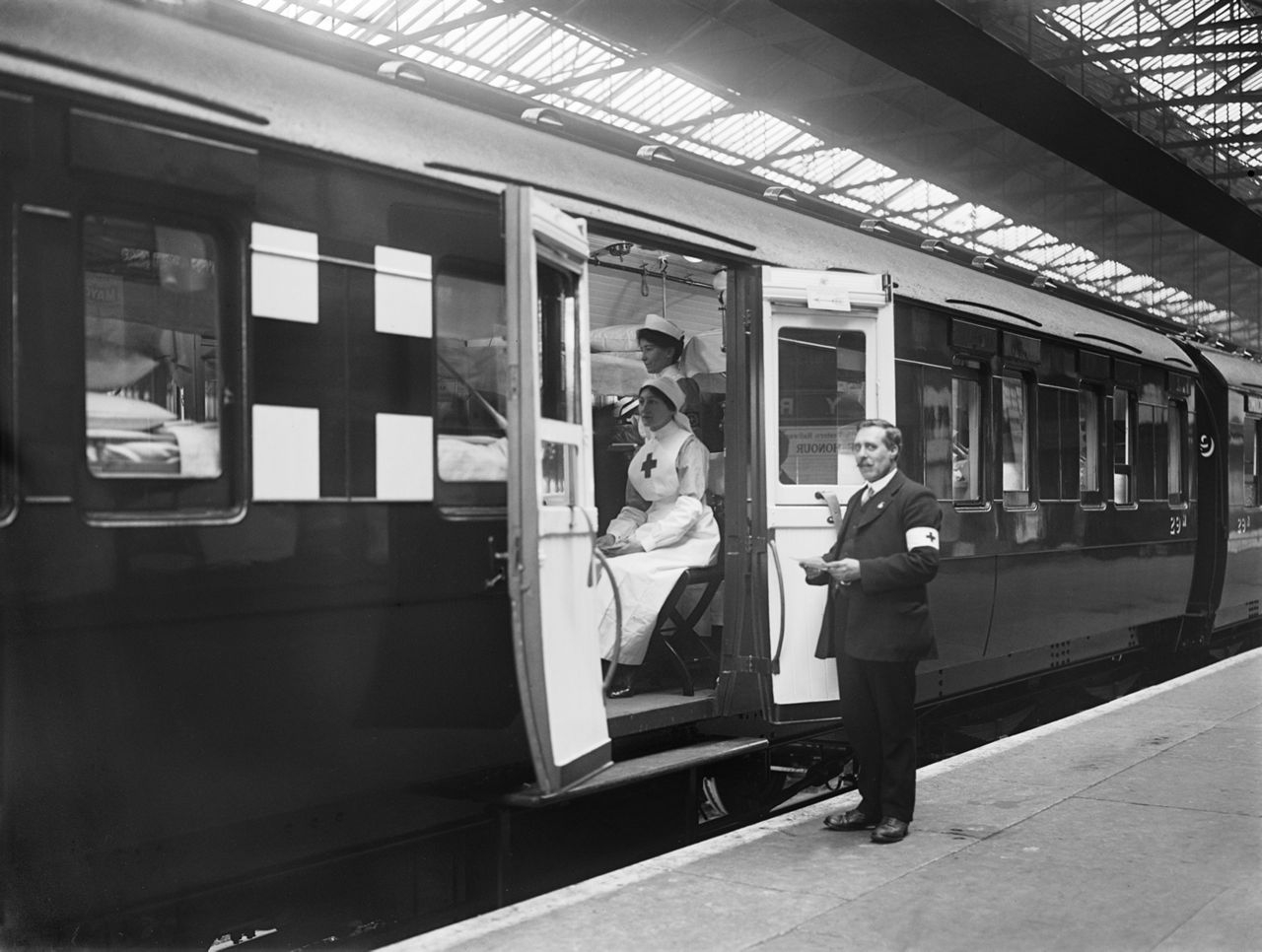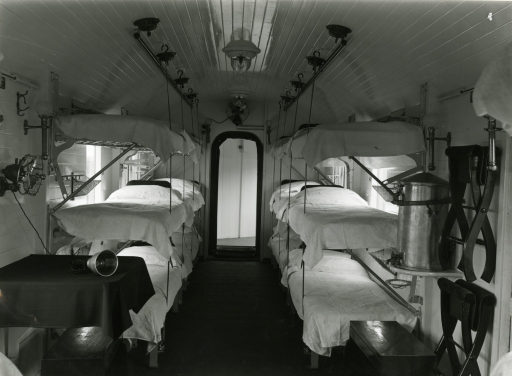A new exhibition at Britain’s National Railway Museum highlights the work of the ambulance trains used to move armies of wounded soldiers from the battlefields of the First World War.
Descendants of medical staff who served in these hospitals on wheels gathered for the opening of the York exhibition on July 7th 2016.
This day in 1916, coinciding with the opening stages of the Battle of the Somme, was the busiest 24 hours of the war for ambulance train traffic.
The exhibition centrepiece is a train carriage of the type that would have been converted into a mobile hospital, with a ward, pharmacy and nurses’ mess room.
Jane Sparkes, Interpretation Developer at the National Railway Museum (NRM), explains: “For the first time, our exhibition will bring together photographs, technical drawings, letters and diaries to bring to life the huge range of human experiences carried on board these trains.
“Ambulance Trains not only explores stories of the wounded soldiers who travelled with their harrowing memories of warfare, but also the medical staff who worked tirelessly in claustrophobic conditions to provide comfort and care.
“It also looks at the railway workers who built the carefully designed trains at incredible speed to keep up with demand, and the wider public who saw the grim reality of the overseas war when these trains pulled into British stations.”
 An ambulance train at Huddersfield Station in Yorkshire, 1916 (Photo: National Railway Museum)
An ambulance train at Huddersfield Station in Yorkshire, 1916 (Photo: National Railway Museum)
In all, 2.7 million passengers were carried on the UK’s ambulance trains during the Great War. Wounded soldiers arriving at British ports were moved by rail to hospitals throughout the country.
The trains were also shipped overseas for service. They were partly funded by voluntary donations, with dolls dressed as nurses sold on station platforms to raise money.
Caroline Stevens was among the descendants of WW1 medics who attended the opening of the NRM exhibition: “My great-aunt Kate Evelyn Luard worked on First World War ambulance trains for the first year of the war,” she explained.
“From 1915-1918 she also served in a field ambulance and as sister in charge of casualty clearing stations on the Western Front. She carried out her duties with unfaltering composure and dedication to those in her care under difficult and often dangerous conditions and was one of the few nurses to be awarded a Bar to her Royal Red Cross.
“We are delighted to be at the opening of the National Railway Museum’s new exhibition which has been inspired by people like her and which features extracts from the numerous letters she sent back to her family from France.”
NRM Archivist Alison Kay said: “After years of hard work and careful research, we are pleased to finally bring these stories which have been lying dormant for almost a century back into the public eye and give these trains and their passengers the twenty-first century prominence they deserve.”
‘Ambulance Trains’ opened at the National Railway Museum (NRM), York, on July 7th 2016. The exhibition, supported by the UK Heritage Lottery Fund, will be accompanied by a programme of free talks by curators, experts and descendants of ambulance train staff. More information on the NRM website.
Read more about Kate Evelyn Luard’s story here in Centenary News.
Source: National Railway Museum
Images courtesy of NRM
Posted by: CN Editorial Team
